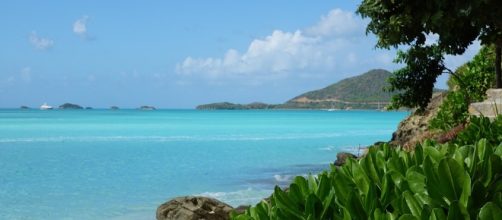The most vicious Hurricane to ever hit the Caribbean is now gone. But Irma will never be forgotten by hundreds of thousands of victims in her wake. Having destroyed billions of dollars of infrastructure and claimed nearly 40 lives, those affected now face a grim future. Most of Barbuda’s population of 1,800 was evacuated before Irma struck on September 6th. On Wednesday 13th, however, more than 1,100 remained in shelters on the neighboring island of Antigua, with nowhere else to go.
The threat of disease is imminent
Following Irma’s devastation, officials from the National Office of Disaster Services toured the island.
Besides a few stranded residents and tonnes of debris, the carcasses of animals were most evident. Scores of livestock, along with pets and strays, perished in the raging floodwaters. 95% of the island’s infrastructure has been destroyed, and there is still no access to potable water or electricity supplies. A major concern is contamination from flooding as there has not been enough manpower on the island to clean up the worst affected areas. The Centers for Disease Control and Prevention (CDCP) has warned of problems with sanitation, food, and medical care. Due to pools of stagnant water across the island, mosquito borne illnesses are possible. These include Chikungunya, Zika, and Dengue, which can prove fatal.
An outbreak of the Zika virus was reported in Antigua and Barbuda in August 2016. While not all those affected displayed major symptoms, infected, pregnant women were at risk of having deformed babies. The CDCP warns people still on the island to beware of eating and drinking contaminated food and water. They also urge safe sexual practices because Zika can be sexually transmitted.
The long road ahead
Rebuilding efforts on the island look grim. Prime Minister Gaston Browne laments the lack of much-needed funds and says even with cash, it may take more than six months to get construction underway. He plans to build better and sturdier structures that will be able to withstand any other natural disaster.
Speaking to Time, he said, “if we have a similar storm in two or seven years from now, we can say hey, now look we have a more resilient country that can stand up to the effects of climate change." Mr. Browne has since called on neighboring islands, along with the national community to come to Barbuda’s aid, as a measure of goodwill. So far, the Caribbean nations of Trinidad and Tobago, Jamaica and St. Lucia have pledged their financial support. Mexico also promised to donate funds last week, but following their 8.1 earthquake, will need to keep their money for rebuilding efforts.
The Caribbean Disaster Emergency Management Agency (CDEMA) confirms it is working with survivors and trying to calm their state of mind.
Spokesperson Joanne Persad said significant work is being done towards “relief, shelter, rehabilitation, and reconstruction." This will include counselors to help traumatized victims who, in many cases, have been left with just the clothes on their backs.


